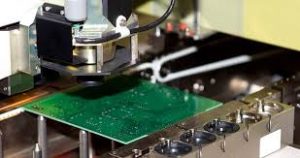What materials are commonly used in contract electronic assembly fabrication?
materials are commonly used in contract electronic assembly fabrication
In contract electronic assembly fabrication, a diverse array of materials is used to create reliable and high-performance electronic devices. These materials can be broadly categorized into substrates, conductive materials, passive and active components, soldering materials, and protective coatings. Each category plays a crucial role in the functionality and durability of the final product.
One of the fundamental materials used in contract electronic assembly is the substrate, typically in the form of printed circuit boards (PCBs). PCBs are made from a base material, usually fiberglass-reinforced epoxy resin, known as FR-4. This material is favored for its excellent mechanical strength, thermal stability, and electrical insulating properties. For applications requiring higher performance, materials like polyimide or ceramic substrates may be used due to their superior thermal and electrical characteristics.
Conductive materials are essential for creating electrical pathways on PCBs. Copper is the most commonly used conductive material in electronic assemblies due to its excellent electrical conductivity and relatively low cost. The copper is usually laminated onto the substrate and etched away to form the desired circuit patterns. In some high-frequency or high-power applications, gold plating might be applied over copper to enhance conductivity and resistance to oxidation.

What materials are commonly used in contract electronic assembly fabrication?
Passive and active electronic components form the core of any electronic assembly. Passive components, such as resistors, capacitors, and inductors, regulate and store electrical energy without requiring an external power source. Resistors are typically made from carbon or metal film, while capacitors may be constructed from ceramic, tantalum, or electrolytic materials. Inductors often use copper wire wound around a magnetic core. Active components, including transistors, diodes, and integrated circuits (ICs), are made from semiconductor materials like silicon or gallium arsenide. These components control the flow of electrical current and perform complex signal processing tasks.
Soldering materials are used to join electronic components to the PCB, ensuring both mechanical stability and electrical connectivity. Solder, an alloy of tin and lead or a lead-free alternative such as tin-silver-copper (SAC), is the primary material used for this purpose. The solder paste, which contains a mixture of solder powder and flux, is applied to the PCB before component placement. During reflow soldering, the paste is heated to melt the solder, creating strong, conductive joints. Flux helps in the soldering process by cleaning and preparing the metal surfaces, enhancing the wetting action of the solder.
Protective coatings and encapsulants are applied to electronic assemblies to shield them from environmental factors such as moisture, dust, and mechanical stress. Conformal coatings, often made from materials like acrylic, silicone, or polyurethane, provide a thin, protective layer over the assembled PCB. For more robust protection, potting compounds, typically made from epoxy or silicone, may be used to encase the entire assembly. These materials offer excellent insulation and mechanical protection, ensuring the longevity and reliability of the electronic device.
Additionally, adhesive materials are commonly used in electronic assembly to secure components and heat sinks. Thermally conductive adhesives, often containing ceramic or metal fillers, are used to attach heat sinks to components, facilitating effective heat dissipation. Epoxy and cyanoacrylate adhesives provide strong bonds for mechanical stability in various applications.
In summary, the materials used in contract electronic assembly fabrication are diverse and tailored to meet the specific needs of each application. Substrates like FR-4, conductive materials such as copper and gold, passive and active components, soldering materials, protective coatings, and adhesives all play critical roles in the performance and reliability of electronic assemblies. The careful selection and application of these materials are fundamental to producing high-quality, durable electronic products that meet the rigorous demands of modern technology.










Post Comment